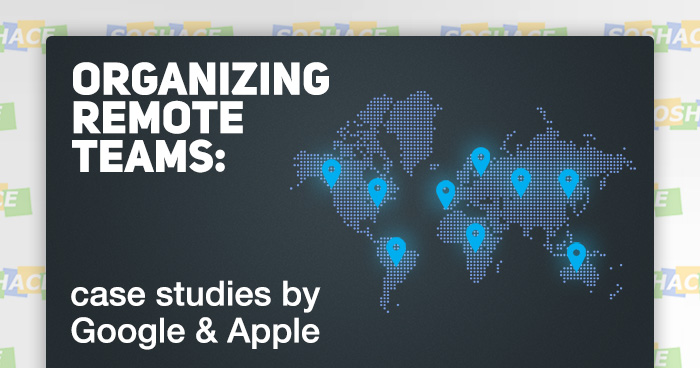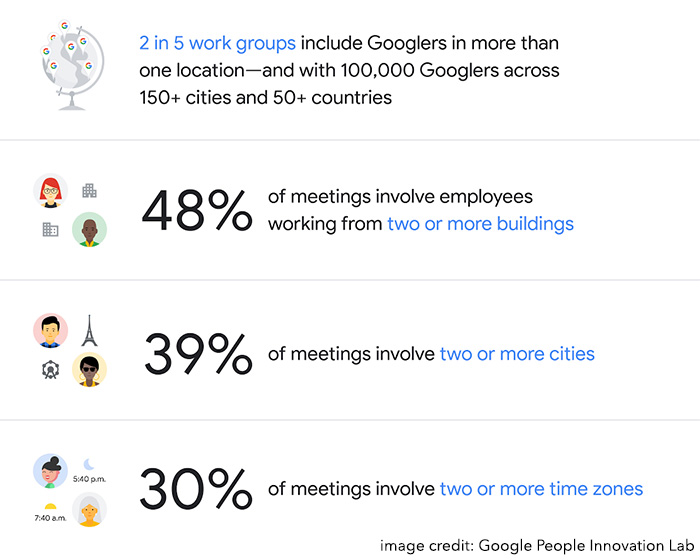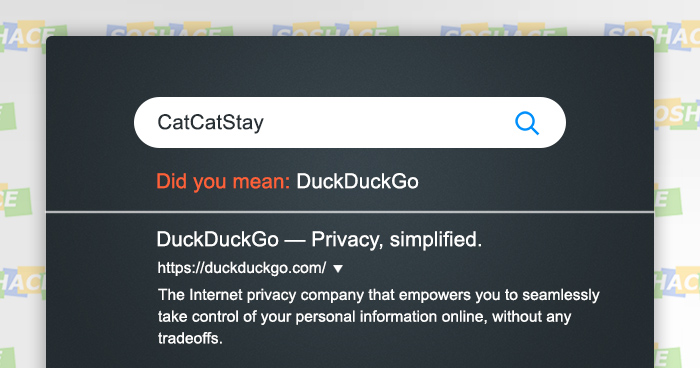How Google, Apple, and Other Tech Companies Organize Their Remote Teams

Phew, good thing they’ve turned location services on!
Remote work is steadily progressing in teams all around the world — with the latest technological advancements, establishing a remote team is easier than ever. Still, remote teams may experience certain challenges and problems when switching to this mode — so what happens to them when such problems arise?
In our workflow, we’re always striving to pay as much attention as possible to the effectiveness of our remote team: are team members satisfied? Do they have any feedback to share? What roadblocks can they see? While musing over these questions, we also like to study how other companies organize their remote teams.
Arguably, this is the aspect that highlights the company’s determination — even though working remotely takes some time to get right, it pays off in the long run and many companies managed to overcome the difficulties they faced. Now, we can study their cases and analyze the methods, techniques, and tricks they used to make their remote teams just as effective as their in-house professionals.
Google’s Study Insights

The scope of Google’s research
Silicon Valley-based powerhouse is no stranger to remote work — and Google takes this concept to the max (max efficiency, that is). With thousands of employees scattered around the globe, the company needed a definitive analysis of remote work efficiency. To do this, Google’s People Innovation Lab in San Francisco turned to their own remote work-associated difficulties: PiLab includes members from San Francisco as well as Tokyo and Boulder — and the team’s manager, Veronica Gilrane, has to make sure that work opportunities of all team members are equal. In their study, PiLab asked more than 5000 remote Google employees with the goal of measuring their performance, well-being, and connectedness.
Arguably, the most important findings are: remote teams perform equally well to on-site teams. This finally addresses the most wide-spread myth about remote teams — “inferior performance” — and we thank the Mythbusters at Google for this research. 🙂 Additionally, the well-being of both offline and virtual employees matched pretty closely, highlighting the importance of finding the work-life balance.
However, the distributed nature of remote work presents a challenge: team members may experience the feeling of disconnectedness from each other, lacking face-to-face communication. Just like a imbalanced work-life duo, alienation among remote employees will lead to worse performance — so how does Google try and fix it? The researchers list these practices that can help your remote team feel more connected — a more detailed write-up about these practices is available in another blog post of ours.
Getting to know the real person behind your colleague: instead of limiting your interpersonal communication to job-related matters only, you can include more personal agenda to your meetings — these can range from “What do you think of reddit’s latest redesign?” to “How did you spend your weekend?” Team managers can lead by example, uniting their teams.
Set boundaries: to respect remote members’ schedule, you need to make sure that they actually agree on the meeting time.
Connect: ideally, remote members should be given the opportunity to travel for in-person meetings — this helps to forge connections in the best way possible. Alternatively, you can organize your team meetings in a way that allows everyone to share their feedback.
Apple’s At-Home Advisors

No, this is Patrick… I mean yes, this is your personal Apple At-Home Advisor!
Even Apple, a company which enjoys strict control over its employees, creates work-from-home opportunities: its At-Home Advisors, as the job name suggests, consult Apple customers remotely. Curiously enough, this division is quite effective despite the fact that “team members” aren’t actually part of the team — they only interact either with their managers or with clients. So how does Apple pull it off?
Remembering Steve Jobs’ motto of “Only hire the best”, Apple enforces its standards of quality among the company’s remote workers: the four-week training period is rigorous, featuring live instructions and self-learning via the company’s proprietary software. Apple’s control over the entire training process and subsequent employment seem to be the general motif: just like the company’s customers, the advisors are also locked into the Apple ecosystem.
This allows Apple to organize these teams in the most efficient manner: placing the workers within the company’s hub city areas, it ensures that the demand for quality support is always met. To create well-rounded professionals, Apple puts equal focus on hard and soft skills: advisors are, of course, expected to know how to fix iMessage hiccups or troubleshoot macOS performance issues — but they’re also expected to do this without telling the user “Jeez, it actually takes some effort to break a device in such a way! Congratulations, you’re going on my ‘Top 10 Irresponsible Users’ list!”
To foster company culture, Apple provides its advisors with products to signify that they’re a part of the “Apple family”: these include an iMac for work, 50$ per month for internet and phone line, and a care package with different keepsakes like T-shirts, mugs, and gift cards. This highlights a great practice that any company can use: show your remote workers that they aren’t some abstract distant entities who need nothing but money — instead, they are real people who can appreciate a thank-you gift every now and then.

So shout-out to our developers! (We regularly send them neat little surprises like these)
DuckDuckGo’s 100% remote team

Well, close enough ¯\_(ツ)_/¯
Google’s pro-privacy adversary, DuckDuckGo, is also pioneering the remote workforce movement. However, unlike its Californian counterpart, DuckDuckGo boasts a 100%-remote team which serves over 36 million searches a day. To manage the company effectively, DDG managers have adjusted the workflow to capitalize on remote work’s advantages. Here are their insights:
- Flexible schedules: using HipChat for in-company communication, members can get used to their colleagues’ schedules and routines. As DuckDuckGo’s front-end developer, Brian Stoner, puts it:
Our schedules are pretty flexible… each person has a lot of flexibility to create a routine that works best for them. I personally find I’m more productive when I don’t have a routine.
- For nonurgent communication, team members use Asana and Github asynchronously; for more thorough discussions, they utilize video calls.
- Personal Project Advisors help team members pull through project-related obstacles and milestones, while Career Advisors consult them about in-demand skill sets and long-term career goals.
- To tell the whole world about the company’s mission, DuckDuckGo uses its blog, documenting company culture.
- To help the team feel more connected, fun and light-hearted events are organized:
quarterly Hack Days, Low Hanging Fruit Days, and Organizational Days, and our Green Bow Tie award (a weekly employee award for going above and beyond that is passed on from the previous winner).
Conclusion
More and more companies are going remote — both tech giants and ambitious startups. They’re proving that with just the right amount of effort, audacity, and creativity all remote work-associated problems can be overcome — and the team will reap the benefits. Here’s to more remote teams all around the world! 🚀











No comments yet